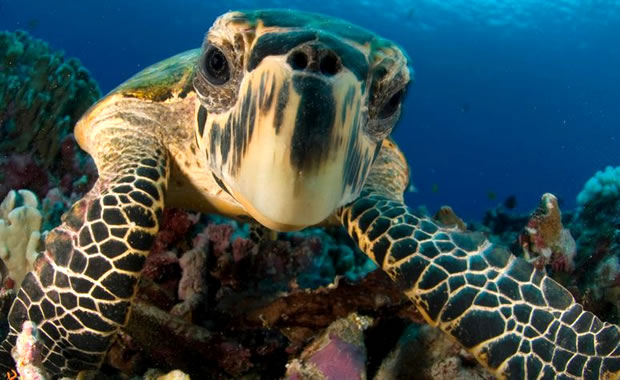
Palawan Peacock Pheasant
|
Creature Profile
The Palawan peacock pheasant is found on the Palawan Island in the Philippines. Adult males reach up to 19.7 in inches length and females up to 15.7 inches. This species is sexually dimorphic, meaning the appearance of males and females are very distinctive. Males have a long and pointed metallic blue crest, and their facial skin around the eye is red with a white patch under the eye. The breast, mantle, flanks and wings are dark metallic greenish-blue and black. The back, rump and tail are grayish-black to brown with rusty brown spots. The upper tail and tail feathers have ocelli (markings that resemble eyes appearing on the feathers of male peacocks). Females are very dull-colored compared to males. Their crests are usually shorter and often held flat. Their faces are pale gray, and the rest of the plumage is dark brown with no ocelli.
Palawan peacock pheasants inhabit the Palawan Island's humid, coastal lowland and deep forests. Diet consists of a variety of seeds, grains, nuts, fruit, leaves, roots, slugs, worms, and insects. They are very shy in the wild, but in captivity they adapt and breed well. In the wild, breeding begins in March and lasts until August. Males may fight other pheasants for breeding rites. Females lay two to five eggs, and nesting may occur in a tree or on the ground. Incubation lasts 18 to 20 days. The males do not help with incubating, but they do help feed and raise the chicks. The chicks remain dependent on the parents for about ten weeks.
This species has a limited range and its habitat is declining. Peacocks are also hunted and traded in the area. The estimated population is less than 10,000, and some are protected in the St. Paul's Subterranean River National Park. Although hunting still occurs, the species is legally protected and a conservation initiative has been proposed by the World Conservation Union, Birdlife International, and the Species Survival Commission, which recommends the continued study of the species and its habitat.
Wikipedia Article

|
Wikipedia Article Copyright Notice: This article is licensed under the GNU Free Documentation License. It uses material from the Wikipedia article "Palawan peacock-pheasant". |
May 11, 2017
Glenn, C. R. 2006. "Earth's Endangered Creatures - Palawan Peacock Pheasant Facts" (Online). Accessed 11/6/2024 at http://earthsendangered.com/profile.asp?sp=361&ID=3.
Need more Palawan Peacock Pheasant facts?




